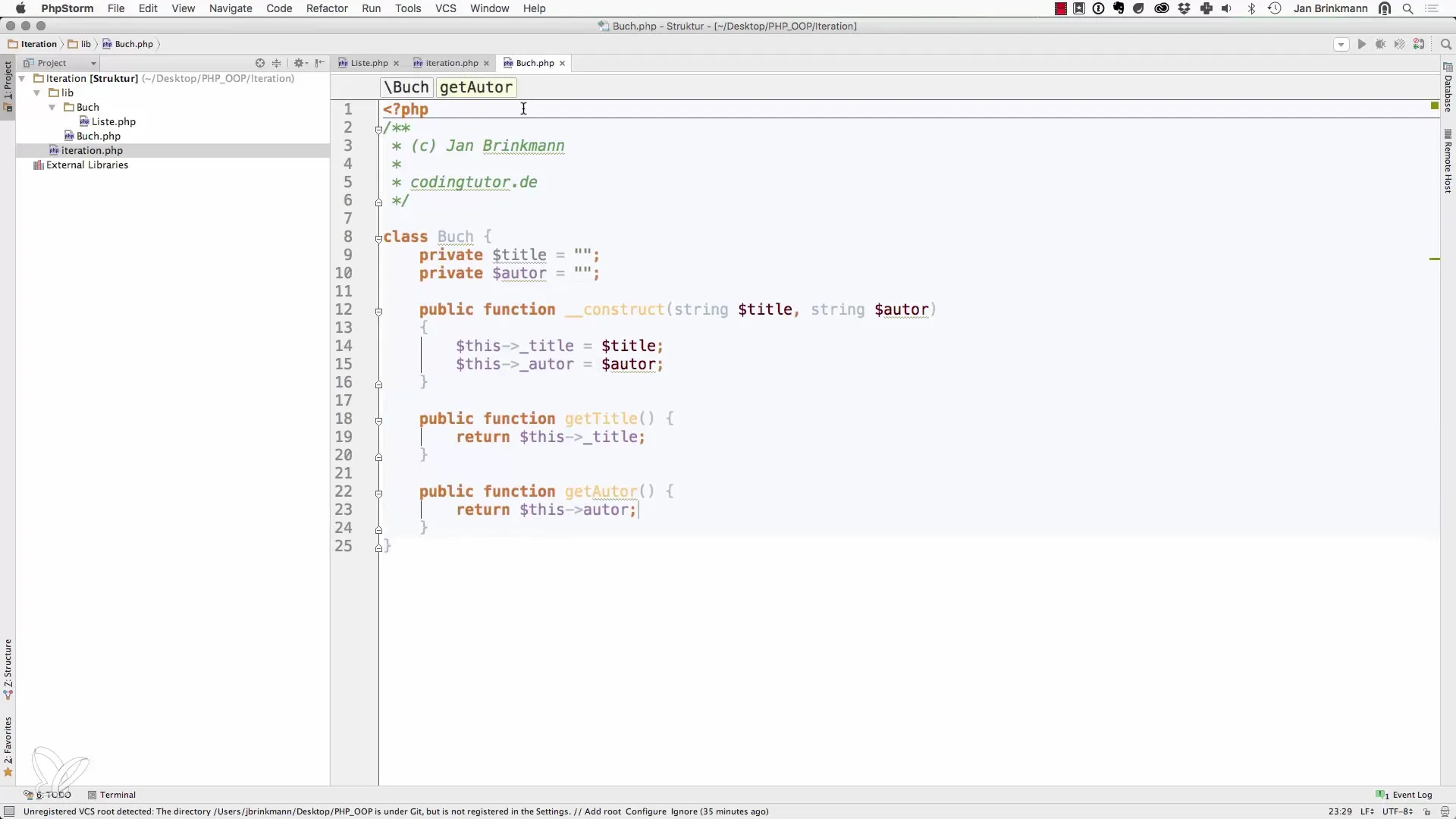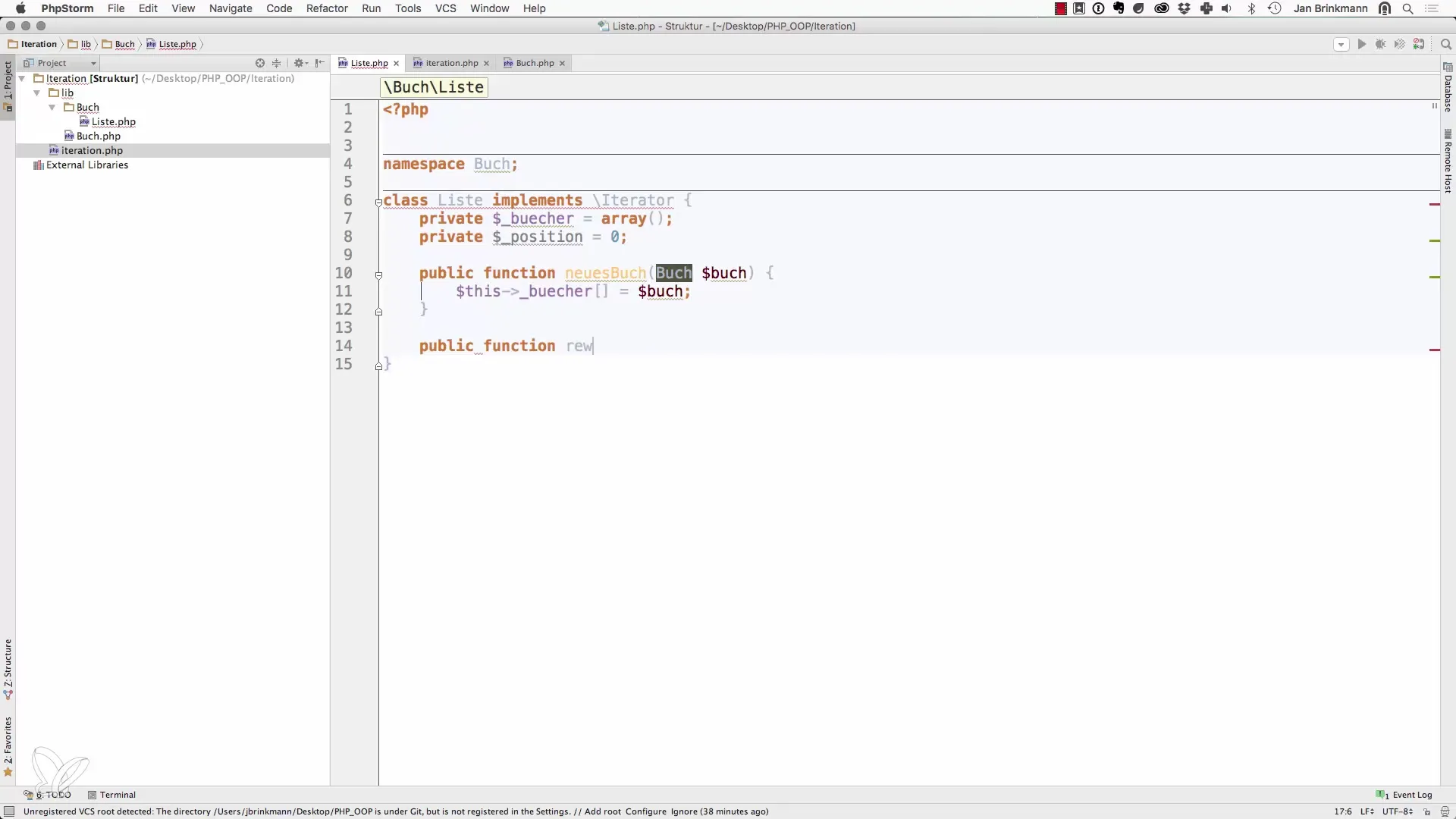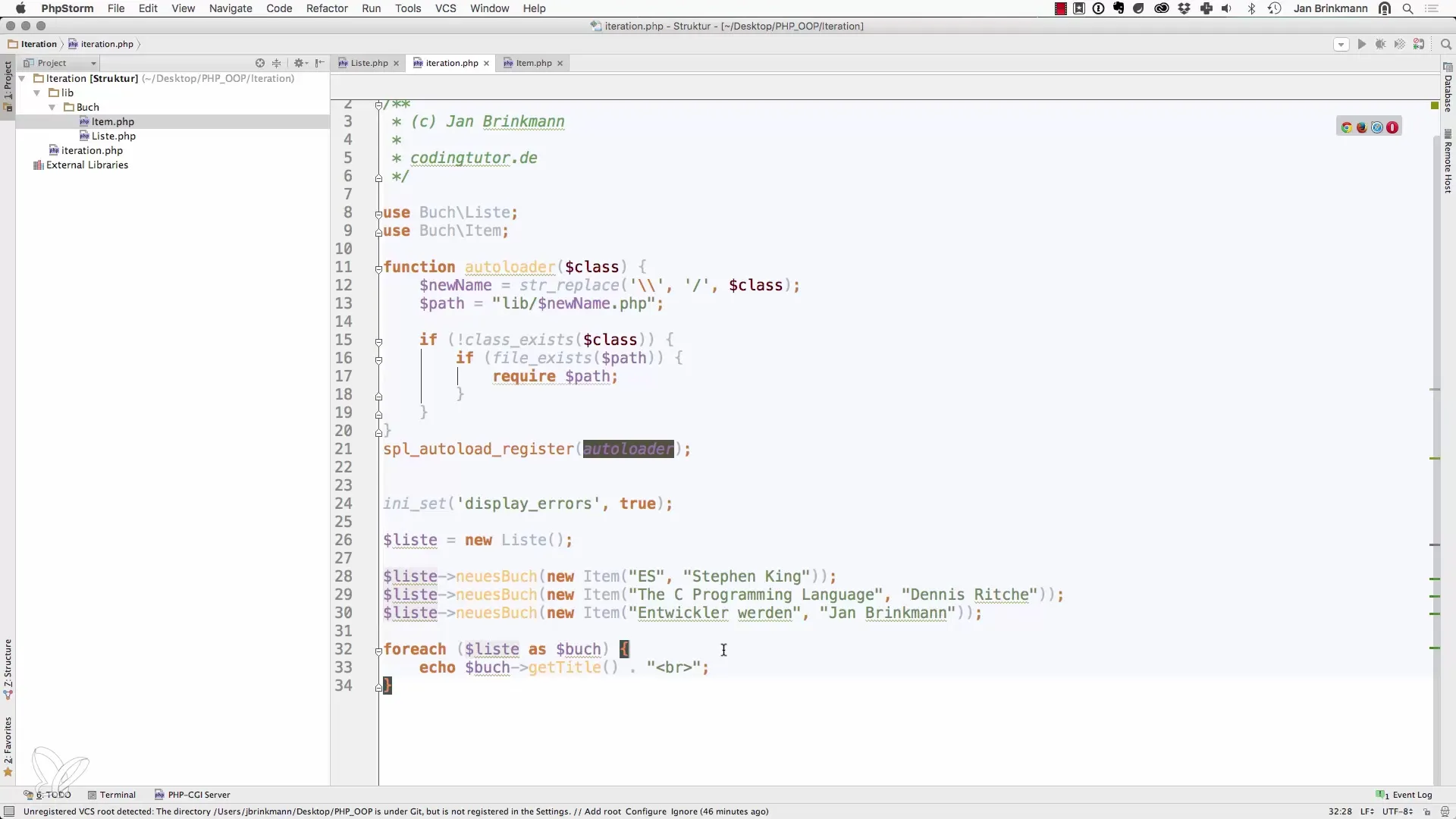Working with data in object-oriented programming can be challenging, especially when it comes to managing and accessing collections of objects. This is where the Iterator-Pattern comes into play. By applying it, you can ensure consistent access to your data, whether it is stored locally or sourced from an external origin. In this guide, you'll learn how to implement the Iterator Pattern in PHP to manage and iterate through a collection of book objects.
Key Insights
- The Iterator Pattern allows for uniform access to different data structures.
- Implementing it in PHP requires creating specific methods.
- Separating data structure from access patterns optimizes the maintainability and flexibility of your code.
Step-by-Step Guide
First, you need to define what data structure will be useful for your book list application. You can create a Book class that encompasses the basic properties of a book, such as title and author.

Next, you need a class that encapsulates a collection of these books; we could call it BookList. This list will be implemented as an array of Book objects.
With this structure, you can create book objects and add them to the BookList. However, access to the books remains unstructured, and this is where the Iterator Pattern comes into play.
To implement the Iterator Pattern, you need to define several specific methods: rewind, current, key, next, and valid. These methods allow other code components to access the elements of your list without having to worry about the internal details of the implementation.

Now you can easily traverse the book list. Create an instance of the list, add books, and iterate through them.
This implementation gives you the flexibility to manipulate the books in the list without needing to change the access code each time the internal structure of the list changes. You can now easily load the books from a database or an API, with access remaining consistent.

A key advantage of the Iterator Pattern is abstraction. Other developers can interact with your BookList without needing to care about how the books are actually stored or where they originate from; these details are abstracted away by the methods of your class.
Summary – Using the Iterator Pattern for Effective Data Processing in PHP
By implementing the Iterator Pattern in your PHP application for book lists, you can ensure a clean and maintainable structure. With the steps described in the previous section, you are now capable of efficiently managing a collection of objects and flexibly accessing their data. Using the Iterator Pattern not only makes the code easier to understand but also adaptable for future changes and enhancements.
Frequently Asked Questions
What is the Iterator Pattern?The Iterator Pattern is a design pattern that provides a uniform way to traverse elements of a collection sequentially without exposing the underlying structure.
How do I implement the Iterator Pattern in PHP?You implement the Iterator Pattern by defining the methods rewind(), current(), key(), next(), and valid() in the class that encapsulates the elements of the collection.
Why should I use the Iterator Pattern?The Iterator Pattern improves the maintainability and flexibility of your code by providing a consistent interface for accessing elements, regardless of their underlying implementation.
Can I use the Iterator Pattern with data from external sources?Yes, the Iterator Pattern allows you to integrate data from various sources such as databases or APIs while keeping access to the data uniform.
What are the benefits of abstraction when using the Iterator Pattern?Abstraction allows other developers to work with your data collection without needing to know the internal details of the implementation, making the code clearer and more maintainable.


